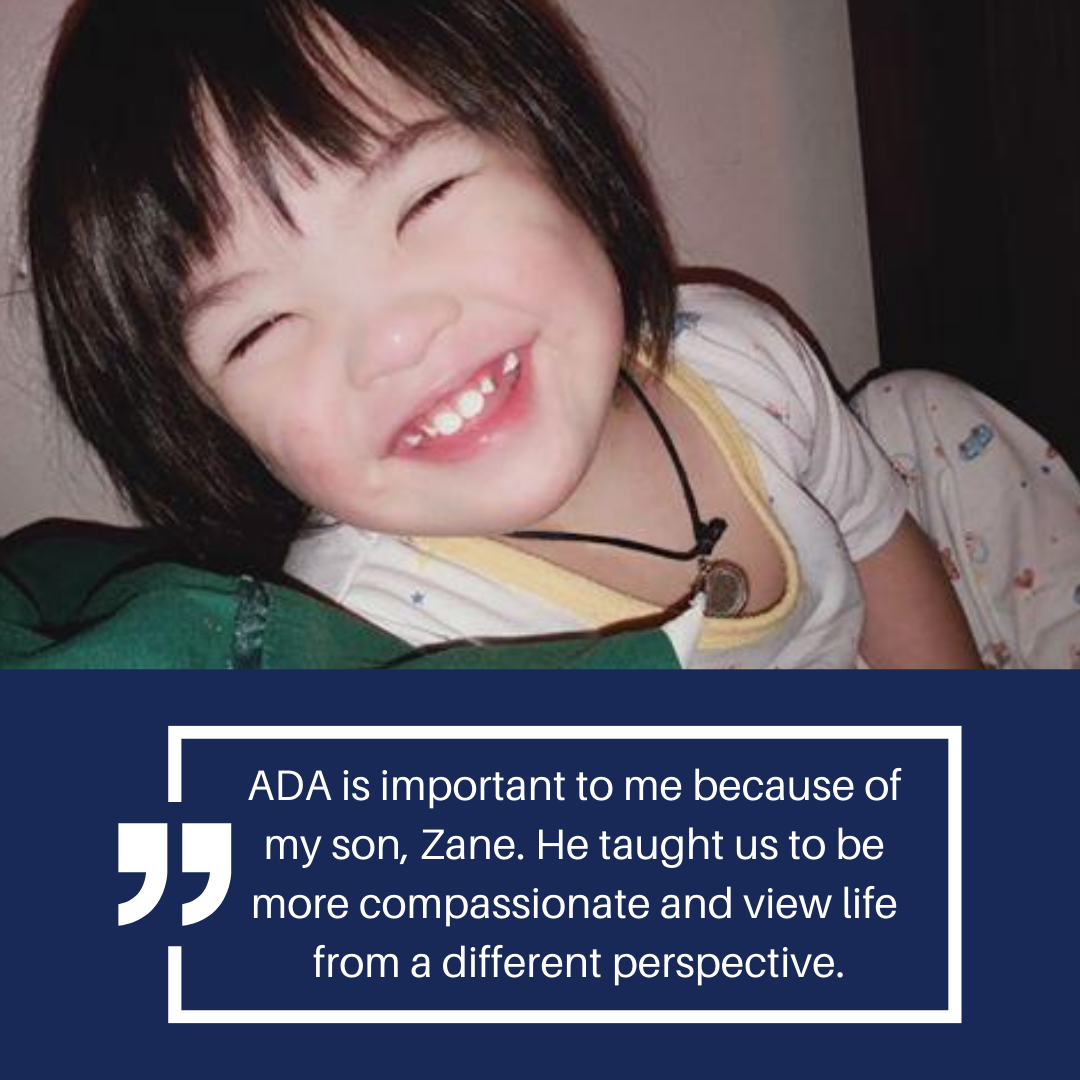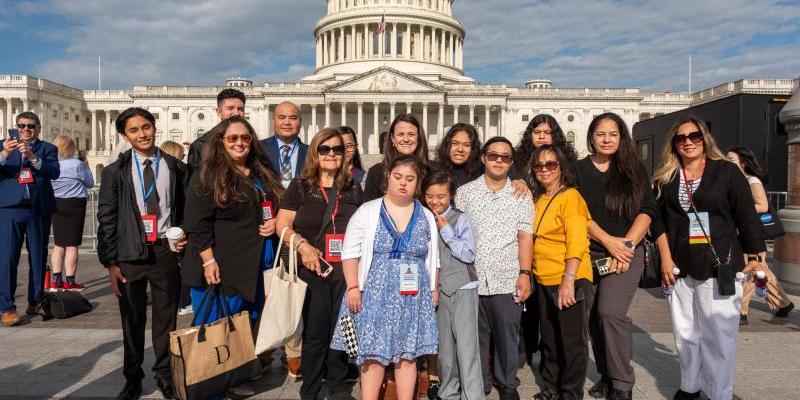On July 26th 1990, the Americans with Disabilities Act was signed into law. This landmark piece of legislation has paved the way for Americans with disabilities to be fully included in our society. In celebration, NDSS has created and provided resources on what the ADA means for people with Down syndrome and other disabilities. Join NDSS in our effort and together we can create an equitable and inclusive society for people with disabilities.
This year marks the 35th anniversary of the ADA. As we reflect on the progress we’ve made, we are asking advocates to contact their 3 Members of Congress about 5 of our top policy priorities.
Download our ADA Plain Language Guide
On July 26, 1990, a law called the Americans with Disabilities Act was passed. The ADA is one of the most important laws in American history. It is the most important law for people with disabilities.
The ADA makes it against the law to treat people with disabilities in a way that isn't fair. It says you can work, go to school, take a bus and enter buildings like everyone else.
The ADA has made things much better for people with disabilities in America. But it is not perfect. We need to do more to make sure everyone, especially those with Intellectual/Developmental Disabilities (IDD), can learn, work and be part of their community. The ADA is divided into five parts or 'titles':
Title 1: Employment
Who is it for?
• Businesses with 15 or more people working there.
What does it do?
• Makes employers provide "reasonable accommodations" for employees. Some examples are a job coach, an American Sign Language (ASL) interpreter, or adaptive equipment such as voice to text software.
• Bans employers from discriminating based on disability. This means your disability cannot prevent you from getting a job.
Who makes sure the law is followed?
• The U.S. Equal Employment Opportunity Commission
Title 2: Public Services: State and Local Government
Who is it for?
• State and local government buildings, courts, parks and other public places.
• Private and public ground transportation.
• State and local public housing.
What does it do?
• Requires access to "reasonable modifications" to policies, procedures, or physical locations. For example, trains, buses and buildings must provide wheelchair ramps and lifts. You can bring service animals into public places.
Who makes sure the law is followed?
• The U.S. Department of Justice
• The Department of Transportation
Title 3: Public Accommodations and Services Operated by Private Entities
Who is it for?
• All places, both publicly and privately owned, that are open to the public.
What does it do?
• Sets a standard for what new buildings must have to be accessible. This means adding a ramp as an alternative to stairs.
• Requires older buildings to remove existing barriers, as long as it does not cause an "undue burden". That means it should not cost too much money or ruin a historic landmark. An example of removing existing barriers is building a ramp.
• Requires businesses to take steps to communicate with you if you have vision, hearing, or speech disabilities.
Who makes sure the law is followed?
• The U.S. Department of Justice
Title 4: Telecommunications
Who is it for?
• Telephone and internet companies.
What does it do?
• Makes a national system of communication that is accessible to the D/deaf, hard of hearing, and people who have speech disabilities. For example, video and captioned phones.
• Requires closed captioning on all announcements, such as TV ads and weather alerts, that are paid for by the government.
Who makes sure the law is followed?
• The Federal Communication Commission
Title 5: Miscellaneous Provisions
Who is it for?
• Federal and state governments, lawyers, and policy makers. What does it do?
• Describes how the ADA relates to other laws.
• Outlines what conditions are not considered disabilities.
You can learn more about the ADA at https://adata.org/ and https://www.ada.gov/.
What Does ADA Mean to You?

















